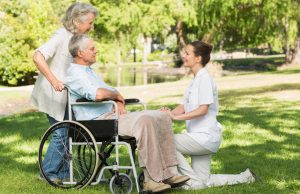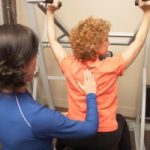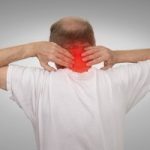 October is National Spinal Health Month, so we present our top health news articles regarding spinal health and other related conditions including obstructive sleep apnea, bladder problems, exercise, spinal muscular atrophy, and spinal stenosis.
October is National Spinal Health Month, so we present our top health news articles regarding spinal health and other related conditions including obstructive sleep apnea, bladder problems, exercise, spinal muscular atrophy, and spinal stenosis.
Obstructive sleep apnea common after spinal injury
Obstructive sleep apnea (OSA) is common after a spinal injury. The study suggests that patients who experienced a spinal injury could benefit from a sleep assessment test to diagnose sleep apnea.
Advertisement
The results of the study showed that 77 percent of spinal cord injury patients have symptomatic sleep-disordered breathing and 92 percent have poor sleep quality. More specifically, there are high rates of obstructive sleep apnea among those with sleep-disordered breathing.
Dr. Abdulghani Sankari, lead author, said, “The majority of spinal cord injury survivors have symptomatic sleep-disordered breathing and poor sleep that may be missed if not carefully assessed. Our findings help in identifying the mechanism of sleep-disordered breathing in spinal cord injury and may provide potential targets for new treatment.” Continue reading…
 Bladder problems in people with spinal cord injuries can be improved with training and epidural stimulation: Study
Bladder problems in people with spinal cord injuries can be improved with training and epidural stimulation: Study
Bladder problems in people with spinal cord injuries can be improved with training and epidural stimulation. People who have suffered spinal cord injuries are often prone to bladder infections, which can progress to kidney damage and even death.
The UCLA researchers studied 10 paralyzed rats that were trained for six weeks with epidural stimulation and five rats that were untrained and did not receive the stimulation. Epidural stimulation was found to enable the rats to empty their bladders more fully and in a timely manner, compared to the rats that did not receive the stimulation.
Senior author of the study V. Reggie Edgerto said, “The big deal here is the immediate effect. There may be a way that when people have bladder problems, you can turn the stimulator on and they can release urine at will. This strategy could have a major impact in improving the quality of life and longevity of human patients.” Continue reading…
 Exercise improves back pain by boosting spine muscles
Exercise improves back pain by boosting spine muscles
Exercise designed to boost coordination of the spine muscles can reduce back pain, according to the latest findings. The program, called motor control exercise, involves the patient practicing normal use of the spine muscles by conducting regular tasks and activities. The patient is guided by a physical therapist. Exercises gradually become more intense and difficult and can include movements that the patient may use during work or recreational activities.
Data was analyzed from 29 clinical trials including over 2,400 people who suffered from lower back pain between the ages of 22 and 55. Effectiveness of motor control exercise was evaluated in comparison with other forms of exercise and with idleness. Continue reading…
 Spinal muscular atrophy cause uncovered by stem cell research
Spinal muscular atrophy cause uncovered by stem cell research
The cause of spinal muscular atrophy, a condition that leads to muscle weakness, has been uncovered by stem cell research. The findings come from researchers at the Advanced Gene and Cell Therapy Lab at Royal Holloway.
The researchers used stem cell techniques to get a better understanding as to why some cells are at a higher risk of degenerating in spinal muscular atrophy than others.
The researchers used Induced Pluripotent Stem Cells (iPSCs), which were reprogrammed and coerced into forming motor neurons that are found in the spine to help control movement and breathing.
During the differentiation stage when the stem cells change into their final shape, two key proteins in motor neurons change in a significant way, which could help explain why these cells are more vulnerable to spinal muscular atrophy degeneration than others. Continue reading…
 Spinal stenosis causes, symptoms, natural treatment, and exercises
Spinal stenosis causes, symptoms, natural treatment, and exercises
Advertisement
Spinal stenosis is a spinal condition characterized by the narrowing of the open spaces within the spine. This narrowing causes pressure on the spinal cord and nerves which can travel to the arms and legs. Spinal stenosis is most common in the lower back and the neck.
Spinal stenosis can often be symptomless, but for many people symptoms can vary from pain and tingling to even problems with the bowel and bladder. We will explain signs and symptoms of spinal stenosis in more detail later on.
Spinal stenosis is most often caused by wear and tear, as well as changes to the spine from osteoarthritis, but there are many other causes, which can contribute to this ailment as well. Continue reading…
